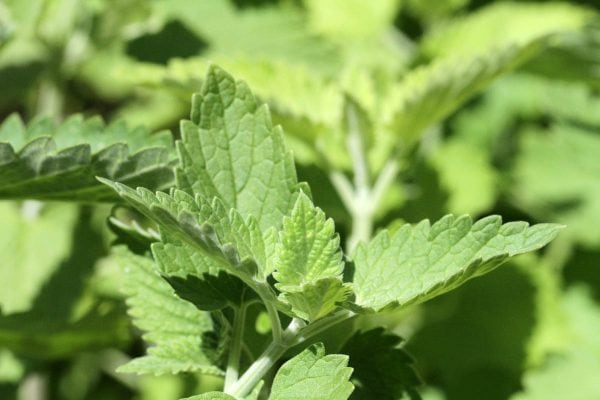Catnip is a perennial herb from the mint family. It is most likely native to Asia and was brought to the United States and Canada via Europe. It is now found worldwide—to the delight of the world’s cat population—who sniff, lick, roll, and rub in it at every opportunity.
In warm weather, you’ll find fresh catnip for sale at pet stores and garden centers. Pet stores may also carry dried catnip (by itself or in cat toys) year-round, and garden centers will sell seeds so you can grow your own. Catnip is quite easy to grow, and once it takes hold—look out!
Step-by-step catnip planting (indoors or outdoors)

- Timing. The best time of year to grow catnip is in the spring. Wait until after the last hard frost in your area and target a sunny location away from other plants. Partial shade may be required in very hot climates.
- Soil. Regardless of whether you sow your catnip seeds indoors (approximately six weeks before the last frost) or out, you’ll need well-drained sandy or loamy soil. Ideally it will have a slightly acidic to slightly alkaline pH. Catnip will also tolerate hard, rocky soils.
- Water. The ideal soil environment is moist but not soggy.
- Temperature. The ideal temperature is between 55 and 85F degrees.
- Thinning. The seedlings will usually sprout somewhere between five and ten days depending on the temperature. When they reach two to five inches in height, thin them to 18 inches apart. Arrowhead-shaped leaves will grow on opposite sides of the stalk.
- Protection! You may need to put netting or chicken wire on top of and around the seedlings to protect them from cats. They will flatten them right back down to the ground!
- Established plants. Once established, catnip leaves are one to three inches long with tooth-like edges. They will not need any fussing, as they are drought tolerant, and unless it’s extremely dry, you may not even need to water them.
- Harvesting. Catnip is best harvested late morning after the dew has dried. You can cut off leaves, stems, or the entire plant. If you want to dry it, hang it upside down in a dry, well-ventilated space. The plants will dry out in two to three weeks, and you can then crumble for use in cat toys or store in an airtight container in your fridge or freezer.
Catnip plant care tips

The good news is that catnip is both deer and rabbit resistant. The bad news is that it’s not cat resistant, so until it is really strong and well-established, you’ll still need to protect it from rolling cats. What took you weeks to grow can be snuffed out in minutes! Chicken wire works well for this as the plant’s leaves will grow through it allowing your cat to munch and tear off small pieces.
Catnip doesn’t need a lot of water, but if it starts to wilt, give it a good soaking. Too much water may cause root rot, which will turn the leaves brown.
Pruning is easy. As your catnip begins to flower, simply snip off the buds. This will encourage more leaves to grow, and the more you prune it, the more it will grow. Thinning the plant out will also provide more ventilation and ward off both disease and insects.
Catnip plant diseases
Catnip is susceptible to powdery mildew, a fungal infection as well as Cercospora and bacterial leaf spot. Should you see any spots or white powder on your plants, the best option might be to simply remove the compromised plant. Should you opt for a treatment, it goes without saying to make sure it is not toxic to cats.
A word about insects
Insects that favor the catnip plant include spider mites, flea beetles, thrips and whiteflies. The same caution as with disease should be used in treating for insects.
How to pot and replant catnip
Once your catnip plant takes hold, it will grow like crazy and fill up the space you allow it. Should you want another plant in a different area, there are two ways to propagate it.
The first is to simply divide the plant in half by separating it all the way down through the roots. Handle the root ball carefully so as not to destroy any roots. Then replant that half in a different place. Make sure the roots are covered by soil and water it thoroughly.
The second method is to take four to six inch cuttings at a 45 degree angle just below a leaf node. Remove the leaves on the lower half of the cutting, and put the stems in a small container of water. Leave the container in a warm spot in bright, indirect sunlight, and change the water daily until roots grow. This usually takes about a week. When leaves begin to sprout, you can transplant it wherever you’d like.
How can you winterize catnip?
Catnip is a perennial, which means it will return every year. When the growing season has ended, you can cut the stems back to a couple inches and water the soil thoroughly. For outdoor plants, you don’t need to do anything over the winter. They do not need water.
Indoor (or potted) plants may need some water occasionally, but do not soak them.
Human benefits
Your cats will thank you for growing your own fresh catnip, but there are also benefits for you!
Nepetalactone, a natural compound occurring in catnip, repels mosquitoes, cockroaches, flies, dust mites, termites, fleas and deer ticks better than DEET. It attracts lacewings, a beneficial garden insect, which control aphids and mites.
Catnip has also been found useful for pain relief, as an anti-inflammatory, muscle relaxant, sedative, anti-anxiety, anti-bacterial, and digestive aid. Pregnant women, however, should avoid catnip, as it can induce uterine contractions.
Catnip for hair growth?
Before drugs came into vogue, catnip tea was used as a hair rinse to promote soft, shiny, and thicker hair. Some folks still use it today. You be the judge. And don’t worry about a horde of cats attacking your head—once catnip is brewed, the odor disappears!
FAQ

What’s the difference between catnip and catmint? Although catnip and catmint look very similar, only catnip will attract cats. Catmint is used for landscaping.
What is cat grass? Cat grass is a blend of different grains grown specifically indoors and may be helpful to a cat’s digestive system.
Does catnip affect dogs? Catnip relaxes dogs in the same way it relaxes humans.
Why do cats love catnip? The essential oil, nepetalactone, is responsible for a cat’s reaction to catnip. Male cats are more likely to react to catnip because the same chemical can be found in a female cat’s urine.
Is it illegal to have catnip? Catnip has always been legal.
What is the shelf life of catnip? As with any herb, catnip’s aroma and efficacy fades with time. It lasts about two years if it is kept in a cool, dry place. Keeping catnip toys in sealed plastic bags will extend their longevity.
Why do only some cats react to catnip? Kittens up to 12 months old may be insensitive to the nepetalactone compound in catnip. It cannot hurt them, however, they may not react. Older cats that do react do so because it is genetic. Approximately 70 percent of felines (including tigers) can be affected by catnip.
Can other plants get cats high? Others plants such as silverine, tartarian honeysuckle, and valerian root have been shown to affect cats.
Is catnip healthy for cats? Read our article by Dr. Debra Eldredge (Veterinarian at Cat World):
Catnip Can Make Cats Happy – How Much is Safe for Your Cat?

